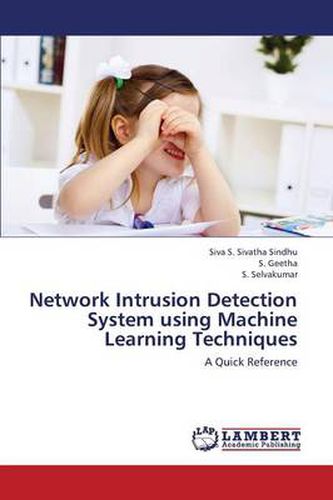Readings Newsletter
Become a Readings Member to make your shopping experience even easier.
Sign in or sign up for free!
You’re not far away from qualifying for FREE standard shipping within Australia
You’ve qualified for FREE standard shipping within Australia
The cart is loading…






This title is printed to order. This book may have been self-published. If so, we cannot guarantee the quality of the content. In the main most books will have gone through the editing process however some may not. We therefore suggest that you be aware of this before ordering this book. If in doubt check either the author or publisher’s details as we are unable to accept any returns unless they are faulty. Please contact us if you have any questions.
This book presents the need for intrusion detection system as it has become an essential concern with the growing use of internet and increased network attacks such as virus, Trojan horse, worms and creative hackers. In addition, the basic details about the historic origin of IDS, the types of IDS, their deployment schemes and general architecture are considered. IDS using various machine learning techniques like fuzzy logic, genetic algorithm, neural network, decision tree etc are discussed and their pros and cons are discussed. Another potential approach is ensemble learning, which have been successfully applied to IDS for differentiating normal and anomalous types. In this book, various ensemble approaches like neuro-genetic, neuro-fuzzy, neurotree etc are explained. The implementation of these IDS depends again on the requirement of the security administrator. The IDS discussed in this book are adaptive to new environments by updating the audit data with recent attacks. If new attacks are identified these approaches can store the attack patterns in log generator for detecting future attacks.
$9.00 standard shipping within Australia
FREE standard shipping within Australia for orders over $100.00
Express & International shipping calculated at checkout
This title is printed to order. This book may have been self-published. If so, we cannot guarantee the quality of the content. In the main most books will have gone through the editing process however some may not. We therefore suggest that you be aware of this before ordering this book. If in doubt check either the author or publisher’s details as we are unable to accept any returns unless they are faulty. Please contact us if you have any questions.
This book presents the need for intrusion detection system as it has become an essential concern with the growing use of internet and increased network attacks such as virus, Trojan horse, worms and creative hackers. In addition, the basic details about the historic origin of IDS, the types of IDS, their deployment schemes and general architecture are considered. IDS using various machine learning techniques like fuzzy logic, genetic algorithm, neural network, decision tree etc are discussed and their pros and cons are discussed. Another potential approach is ensemble learning, which have been successfully applied to IDS for differentiating normal and anomalous types. In this book, various ensemble approaches like neuro-genetic, neuro-fuzzy, neurotree etc are explained. The implementation of these IDS depends again on the requirement of the security administrator. The IDS discussed in this book are adaptive to new environments by updating the audit data with recent attacks. If new attacks are identified these approaches can store the attack patterns in log generator for detecting future attacks.